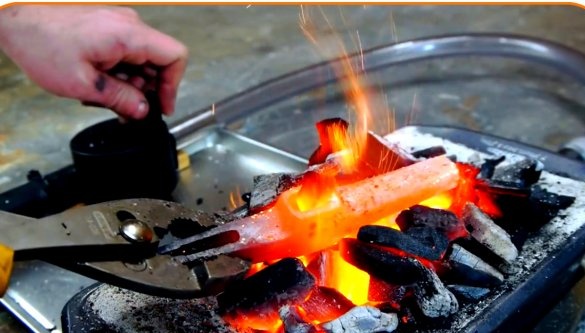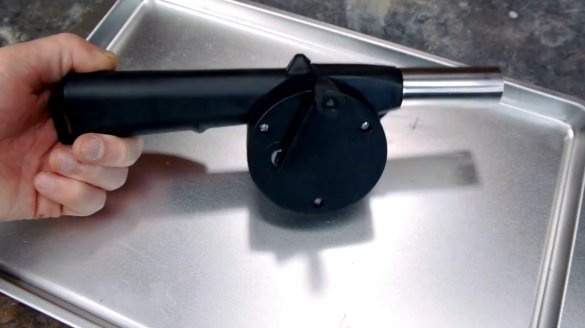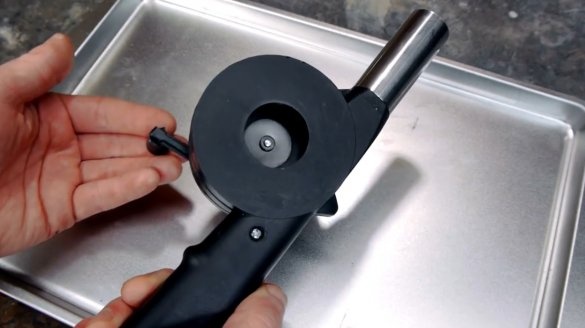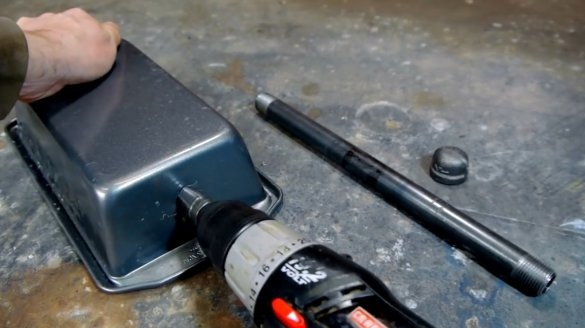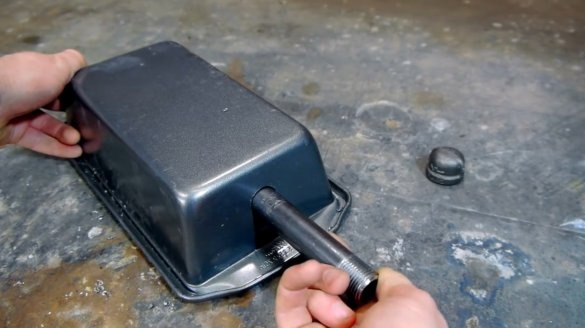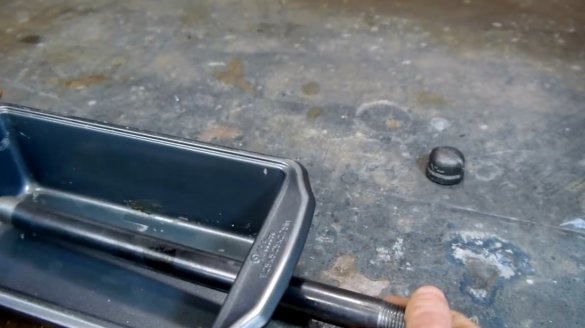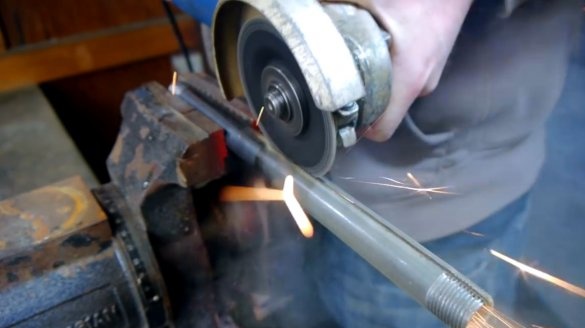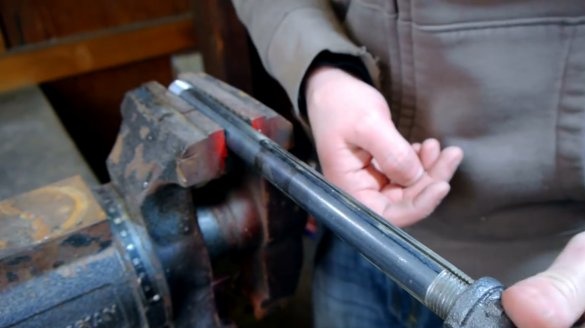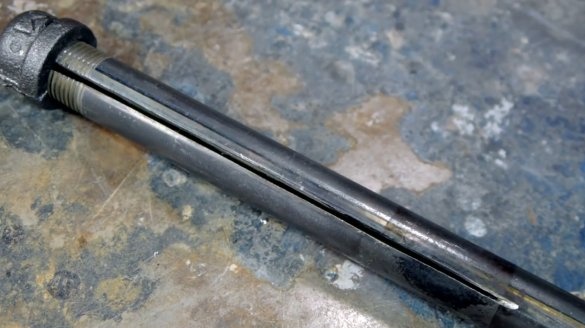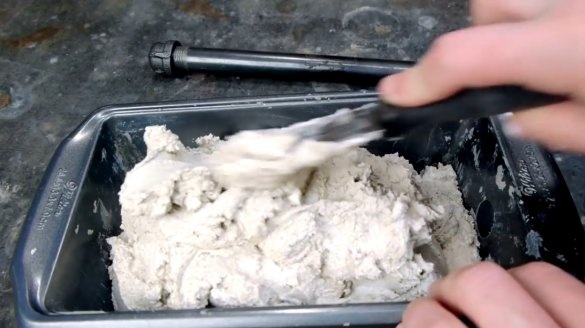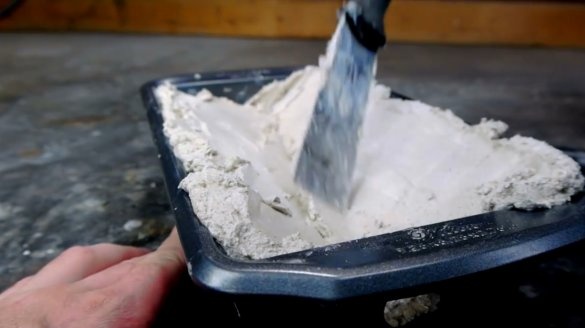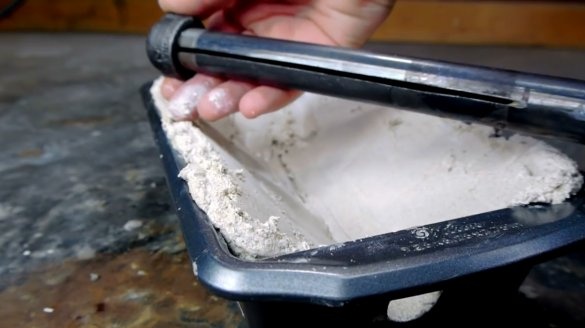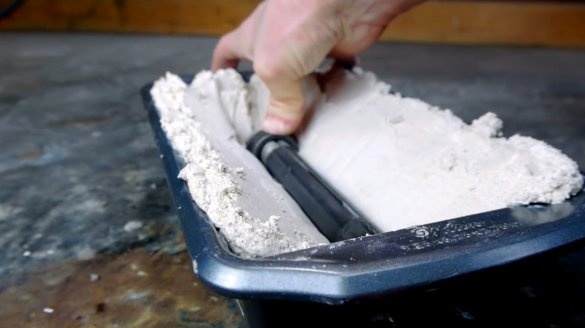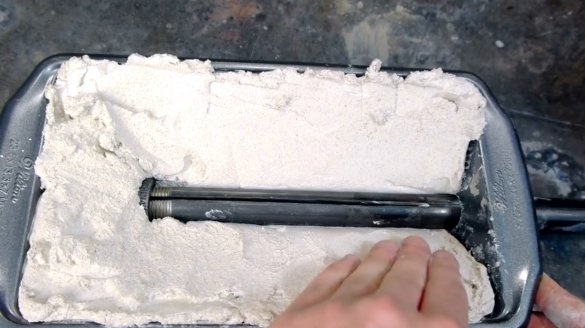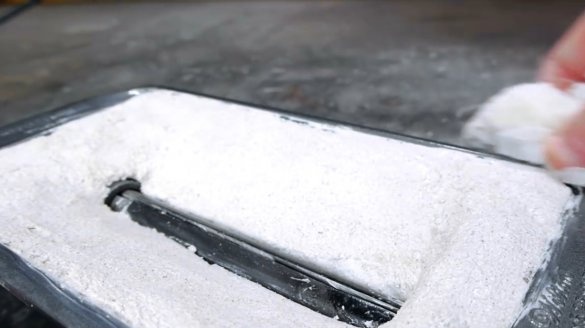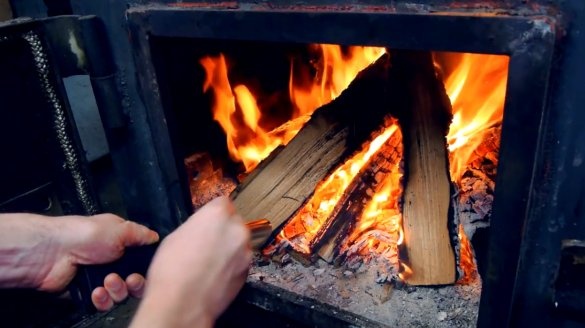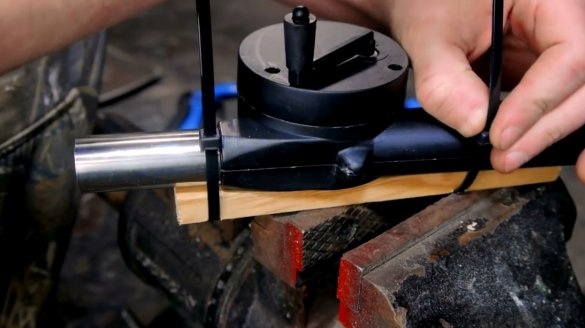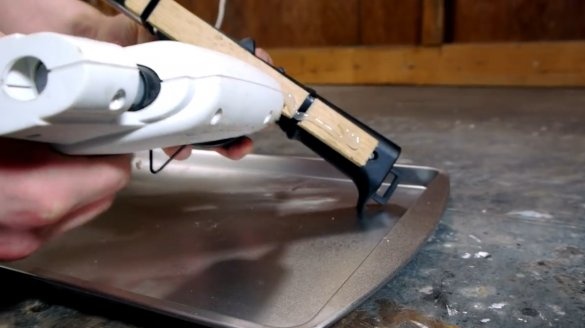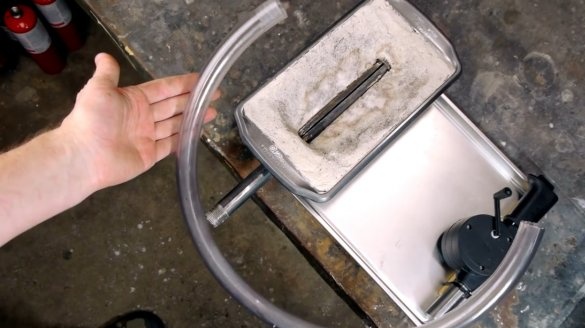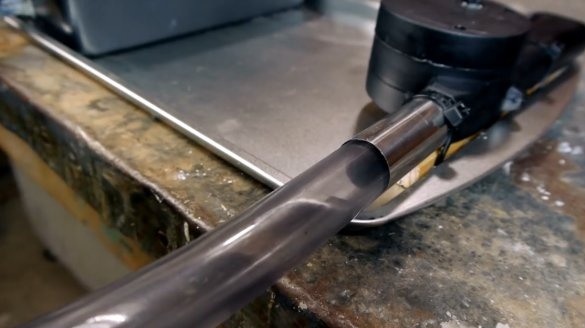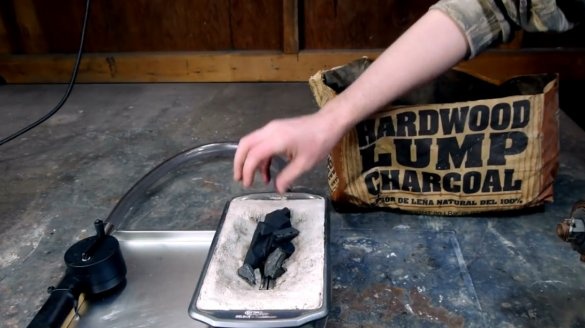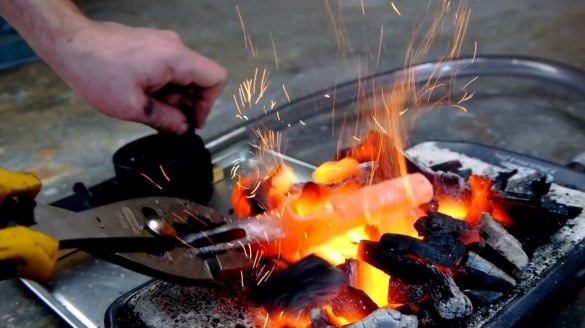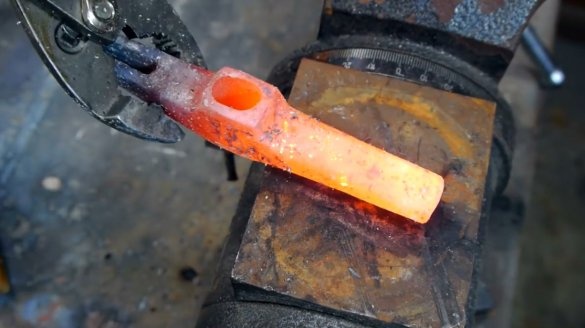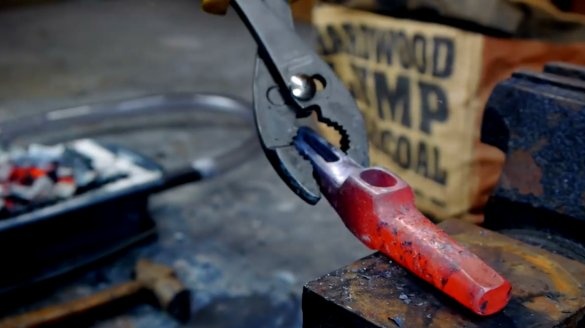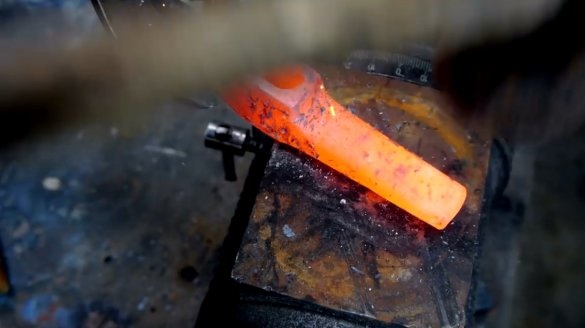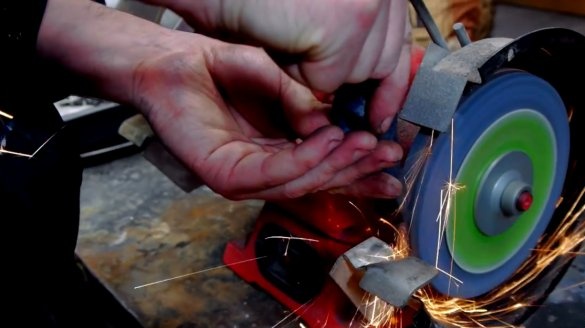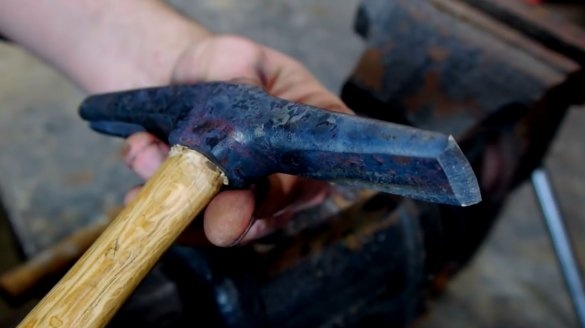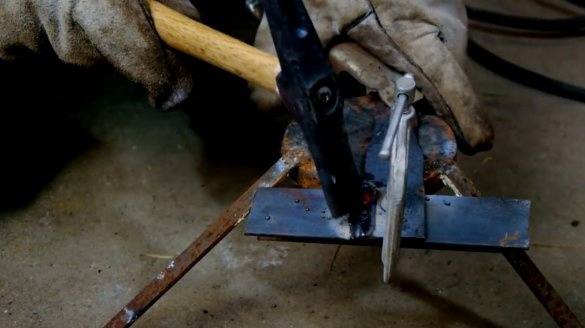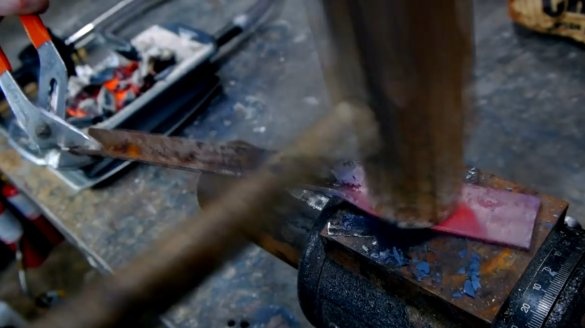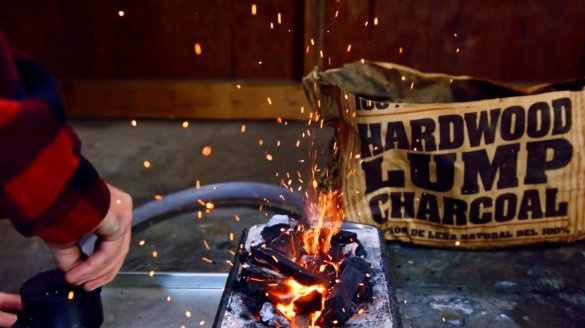All of you are well aware that forging metal processing requires a forge or furnace. But often they take up a lot of space.
In this article, the author of the NightHawkInLight YouTube channel will share with you a secret on how to make a miniature furnace for coal, which is just perfect for small projects, such as making knives, small tools.
Materials
—
- Steel pan and basin
- Vinyl tube
- Gypsum, sand, water
- Steel pipe, ¾ inch plug.
Instruments, used by the author.
—
—
-, cutting disc
—
—
- Vise, anvil, hammer, putty knife.
Manufacturing process.
One of the most important constituent elements of such a furnace is, which pumps air for burning coal. For a larger hearth, an ordinary vacuum cleaner is quite suitable for these purposes. The same project does not involve the use of electricity. The horn will be controlled manually. And how - you will find out below.
The main capacity of the hearth will be a steel pan for baking bread. You will also need a ¾ inch steel pipe with a length of 50 cm with a suitable plug.
At about half the height of the pallet, the author drills a through hole for a ¾ inch diameter pipe step drill. Through this tube, air will enter the crucible for burning coal.
With the help of a grinder, a longitudinal slot is made on the pipe to the middle of its length, which will allow air to additionally enter the tube. You can also drill a series of holes if you do not have a grinder.
A cap is screwed onto the end of the pipe.
Now is the time to think about the internal thermal insulation of the furnace. Lining is made from a mixture of 50% building gypsum and 50% sand. The author takes these ingredients by eye in a ratio of 1: 1. Here, high accuracy is not fundamental.
After that, the finished batch is laid out in a steel pan and distributed in it with a spatula so that a V-shaped depression forms along the entire midline of the container.
At this stage, while the gypsum is still plastic, an iron pipe is inserted into the hole and placed properly - with a slot up.
Now you can complete the formation of the cavity on which coal will be laid out. It is important to check that the lining completely covers the walls of the chamber. So, the horn itself is ready. It remains only to think how to bring air to it.
And a solution was found - a fireplace blower. The volume of air that it pumps is not large, but it is quite enough to maintain fire in the furnace.
First, the author carves a small wooden block, which will serve as a stand.
Now he puts the blower on its side and fixes it on the block with the help of plastic cable ties, trying to leave the air intake pipe open.
Then with hot glue he glues the assembly to a large baking sheet.
The horn itself is placed on its opposite side.
Both structural elements are connected to each other using a vinyl tube.
It’s time to try the horn in action! The author puts a small pile of coal into the pan, sets it on fire with a gas burner and delivers air. Thanks to the blower, coal flares up very quickly.
It is important to remember that when using coal as fuel in the room, good ventilation should have been provided to prevent carbon dioxide poisoning.
The author is testing his new bugle on an old pickaxe. He manages to heat it so much that it is easy to forge and takes on a flat shape.
And so it turned out the processing of the tool.
Another advantage of such a horn project is that its external walls heat up only slightly, so it is almost impossible to get burned here.
The second plus of this system is its mechanical blower, which can significantly save coal consumption. It is enough just not to rotate the handle when there is no object to be heated in the furnace.
Thanks to the author for the idea of a simple but useful fixtures for the workshop!
All good mood, good luck, and interesting ideas!
Author video can be found here.

